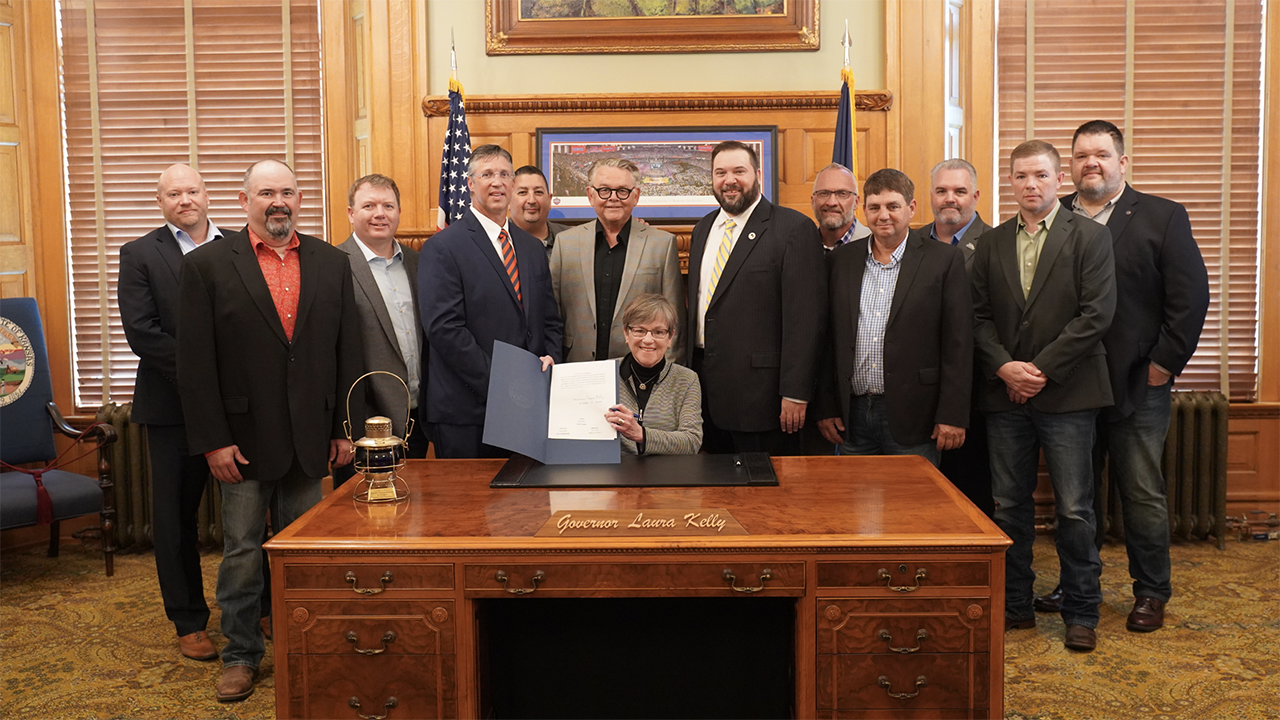
Kansas Attempts Two-Person Crew Requirement
Written by Marybeth Luczak, Executive Editor
Gov. Laura Kelly on Oct. 11 announced that Kansas would have a two-person crew rule “to improve safety.” (Gov. Kelly’s Office Photograph)
The state of Kansas on Nov. 3 will put into effect an administrative rule requiring two-person freight railroad crews.
“Kansans’ safety and security must always come first, and that includes the safety of our railroad crew members,” Gov. Laura Kelly said in an Oct. 11 press release, which noted that Kansas is the 10th state to require a two-person crew. “This requirement will protect workers from the effects of fatigue, prevent train derailments, and reduce risks in the many Kansas communities along our railroad tracks.”
In May, Kelly directed the Kansas Department of Transportation to propose the requirement, and before the regulation was implemented, it was subject to at least a 60-day public comment period, according to the Governor’s Office.
Association of American Railroads spokesperson Jessica Kahanek told the Associated Press that “Regulatory efforts to mandate crew staffing such as the latest in Kansas lack a safety justification.” When the media outlet asked if the industry will challenge the Kansas rule in court, as was done this summer when Ohio mandated two-person crews, she “said she didn’t want to speculate.” AAR contended that the Ohio law didn’t permit exceptions and was unconstitutional because it contradicted the 1995 Interstate Commerce Commission Termination Act.
The Kansas and Ohio requirements follow Norfolk Southern’s Feb. 3 derailment in East Palestine, Ohio.
According to the American Short Line and Regional Railroad Association (ASLRRA), many U.S. short lines already operate with one-person in the locomotive, and there are examples of this in Kansas.
“As we have stated on many occasions, the decision regarding the appropriate number of crew members to execute any operation should be made by each railroad based on safety, and negotiated between management and employees, not dictated by legislation,” ASLRRA President Chuck Baker told Railway Age. “Several states have attempted to legislate crew, size which the railroad industry has argued vociferously in state legislatures and in courts is pre-empted by federal law. A piecemeal approach by state would be incredibly detrimental to the fluidity and efficiency of the interconnected rail network. Finally, any increase in operational costs without a safety reason would risk short line viability. Most short lines cannot pass these increased costs along to their shippers. If they are able to pass along the increased costs, pricing to the end consumer of goods moved by rail will also increase, or the rate increase would force shippers to move the tonnage by truck—a negative to the environment, road safety, and infrastructure maintenance paid for by the public.”
According to Gov. Kelly’s Office, “the majority of railroads in Kansas are currently operating [with] two-person crews and will have no increased labor costs from the implementation of this regulation.”
If the Federal Railroad Administration finalizes the rule it proposed in 2022 requiring two-person crews or if federal rail safety legislation passes that includes a two-person requirement, state regulations like Kansas’ could be moot.
All state minimum crew-size laws have no effect on Class I railroads as their crew size is determined by collective bargaining agreements.
Further Reading:
Minnesota Enacts Two-Person Crew Size Legislation
AAR Sues Ohio Over Crew Size Legislation
Crew-Size Edicts Threaten Small Railroads



